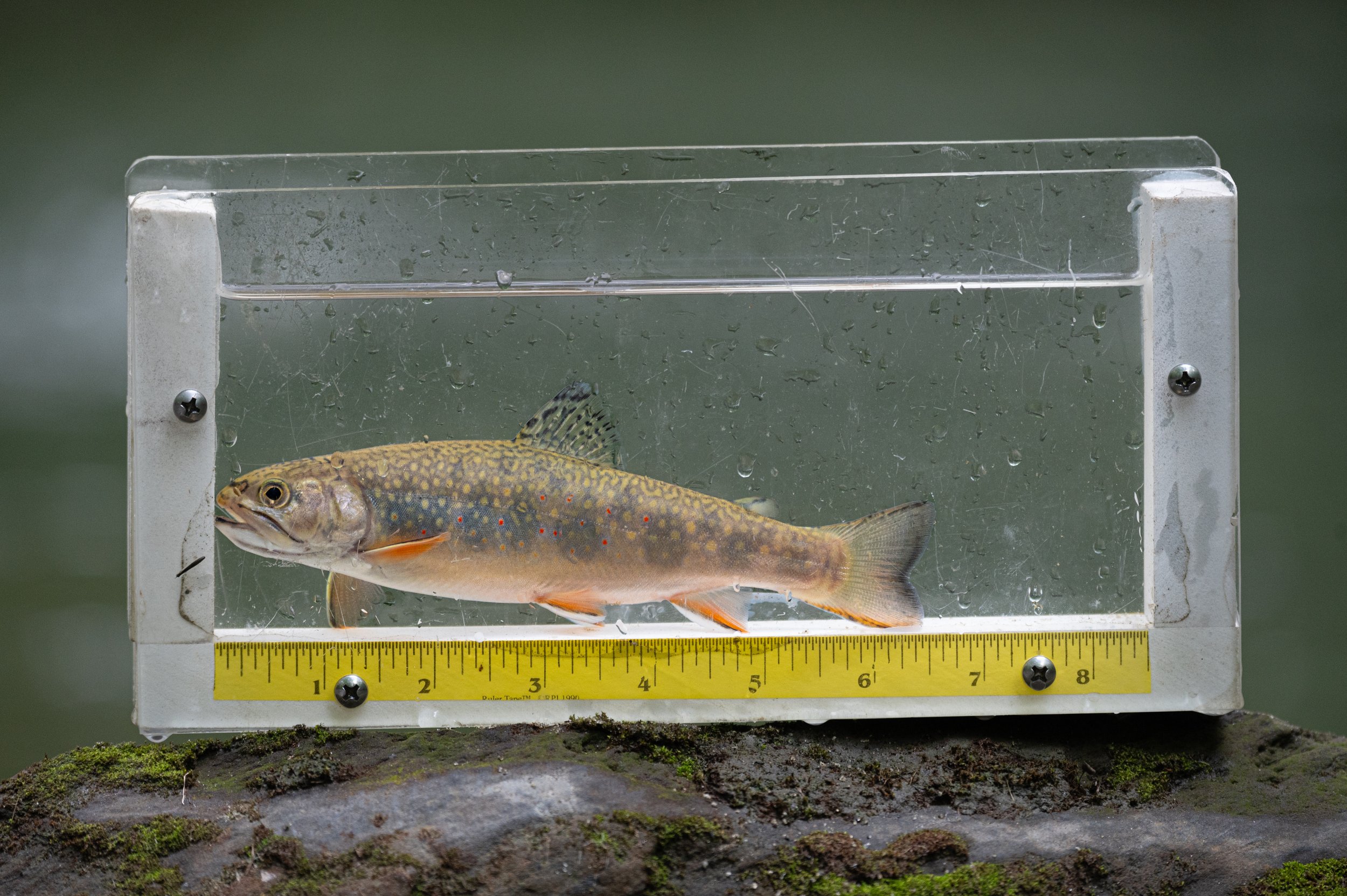Vt. F&W: Leave logs, boulders, in rivers to help fish recover from floods
July 29, 2023 | By Vermont Department of Fish & Wildlife | News Release A wild brook trout sampled from a Vermont stream after recent floods. Trout populations can drop significantly after a flooding event, according to biologists. Vt. Fish & Wildlife photo
Vermont Fish and Wildlife Department biologists are advising the public to refrain from moving large objects such as logs and boulders that entered streams and rivers during recent storms and flooding.
The rationale aims to prioritize river resilience and help impacted fish populations.
“The first priority in flood recovery is human safety,” said Aquatic Habitat Biologist Will Eldridge. “During Tropical Storm Irene, we learned that retaining and recovering river habitat that buffers against future floods and helps impacted fish populations rebound lines up with that human safety priority.”
Rivers with features like fallen trees, large boulders, and winding channels provide better fish habitat and are more resilient to floods. These features reduce flood impacts for landowners and downstream communities by slowing flood waters. They also provide fish with shelter and places to forage that can be the difference between successful recovery and lasting impacts for fish populations, biologists say.
“After Irene some recovery efforts removed trees and boulders from rivers and ended up making rivers more vulnerable to floods and slowing fish population recovery,” Eldridge said. “We are asking Vermonters to leave downed trees and boulders in rivers and streams whenever doing so does not create a risk for people, roads, or infrastructure. These features will help fish populations recover and help our rivers weather future floods.”
Impacts to Vermont’s fish populations and river habitats from the July flood will take time to assess, wildlife experts say. But based on data from Tropical Storm Irene, the department says that trout populations in some rivers may be significantly reduced by this year’s flood.
“Trout populations can drop by around 50% after extreme events like we saw this month, and can take two or three years to recover,” Eldridge said. “How badly trout in a given river are impacted and how well they recover has a lot to do with habitat.”
Landowners, businesses, and towns planning recovery work in rivers and streams are required to follow protocols from the Vermont Department of Environmental Conservation. Information on flood recovery resources is online at ANR.Vermont.gov/Flood.

